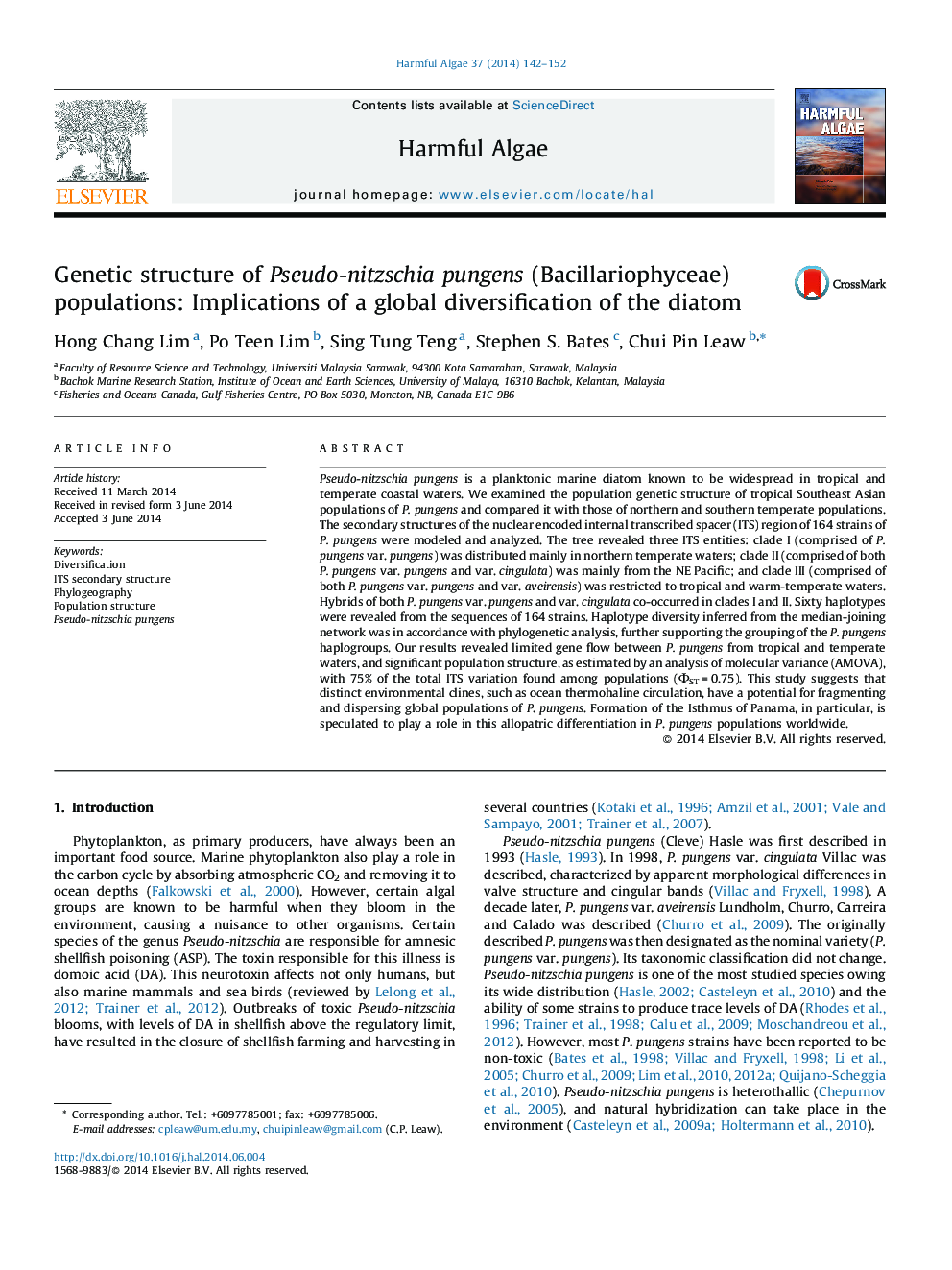| Article ID | Journal | Published Year | Pages | File Type |
|---|---|---|---|---|
| 4545345 | Harmful Algae | 2014 | 11 Pages |
•Gene flow is limited between P. pungens from tropical to temperate waters.•Consistent genetic groupings of P. pungens morphological varieties were found.•Ancient geological events may have triggered the global diversification of P. pungens.
Pseudo-nitzschia pungens is a planktonic marine diatom known to be widespread in tropical and temperate coastal waters. We examined the population genetic structure of tropical Southeast Asian populations of P. pungens and compared it with those of northern and southern temperate populations. The secondary structures of the nuclear encoded internal transcribed spacer (ITS) region of 164 strains of P. pungens were modeled and analyzed. The tree revealed three ITS entities: clade I (comprised of P. pungens var. pungens) was distributed mainly in northern temperate waters; clade II (comprised of both P. pungens var. pungens and var. cingulata) was mainly from the NE Pacific; and clade III (comprised of both P. pungens var. pungens and var. aveirensis) was restricted to tropical and warm-temperate waters. Hybrids of both P. pungens var. pungens and var. cingulata co-occurred in clades I and II. Sixty haplotypes were revealed from the sequences of 164 strains. Haplotype diversity inferred from the median-joining network was in accordance with phylogenetic analysis, further supporting the grouping of the P. pungens haplogroups. Our results revealed limited gene flow between P. pungens from tropical and temperate waters, and significant population structure, as estimated by an analysis of molecular variance (AMOVA), with 75% of the total ITS variation found among populations (ФST = 0.75). This study suggests that distinct environmental clines, such as ocean thermohaline circulation, have a potential for fragmenting and dispersing global populations of P. pungens. Formation of the Isthmus of Panama, in particular, is speculated to play a role in this allopatric differentiation in P. pungens populations worldwide.
Graphical abstractFigure optionsDownload full-size imageDownload high-quality image (244 K)Download as PowerPoint slide
